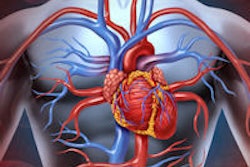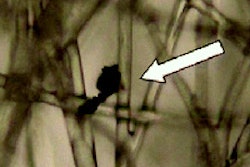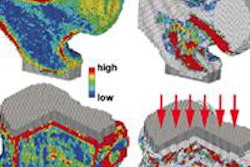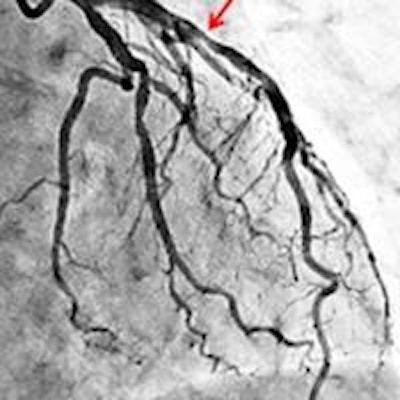
Japanese researchers using coronary angiography discovered that patients with spasms near sites of coronary stenosis had a higher risk of experiencing a heart attack in the future, according to an article in the September 8 issue of the Journal of the American College of Cardiology.
About 40% of patients with angina have vasospastic angina, in which spasms occur in the coronary arteries. While angina patients who are treated with appropriate drug delivery have a good prognosis, the incidence of heart attack can increase in those who have vasospastic angina alongside coronary artery stenosis.
Despite the condition's risk to patients, no detailed study on the positioning of coronary spasm relative to coronary artery stenosis had been performed. So Dr. Masanobu Ishii, Dr. Koichi Kaikita, PhD, and colleagues from Kumamoto University in Japan decided to fill the void (JACC, September 8, 2015, Vol. 66:10, pp. 1105-1115).
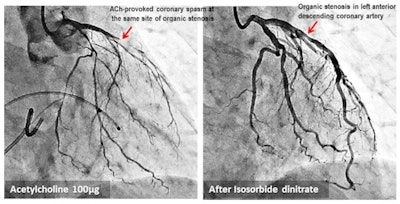 Cardiac cath image shows spasm at site of organic coronary stenosis. Credit: Prof. Mitsuyoshi Nakao. Shared via Creative Commons license.
Cardiac cath image shows spasm at site of organic coronary stenosis. Credit: Prof. Mitsuyoshi Nakao. Shared via Creative Commons license.The researchers used cardiac catheterization to examine the positional relationship between coronary spasm and arteriosclerosis, comparing patients with spasms at sites of coronary atherosclerotic stenosis to patients with spasms at other sites.
They analyzed data from 1,760 cardiology patients who had chest pain and underwent resting cardiac cath at Kumamoto University Hospital between 1991 and 2010. The cases were divided into three groups:
- Patients who had coronary spasm at a coronary artery stenosis site
- Patients who had coronary spasm at another site
- Patients who had spasms but no stenosis
In the patient population, coronary spasm occurred 873 times and coronary artery constriction was observed 358 times. Both coronary spasm and coronary atherosclerotic stenosis occurred in 233 cases.
Patients with spasms at sites of coronary stenosis had the highest risk of experiencing a heart attack in five years, compared with the other two groups, the researchers found.
They advised that physicians check for the presence of spasms at sites of coronary artery stenosis to predict a patient's risk for a future heart attack; the protocol could also be useful for starting preventive therapy.




